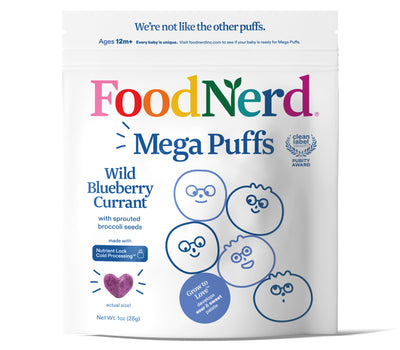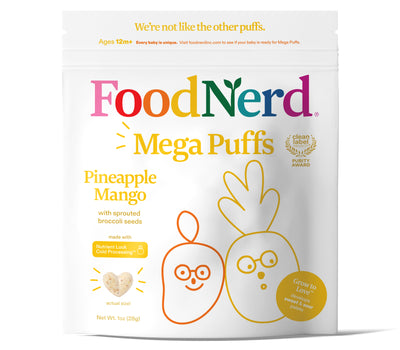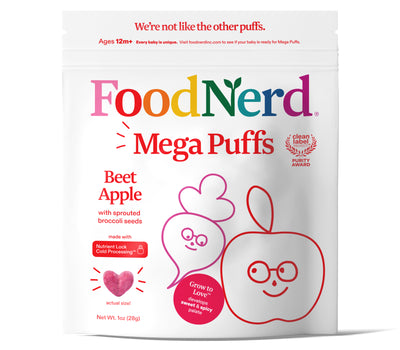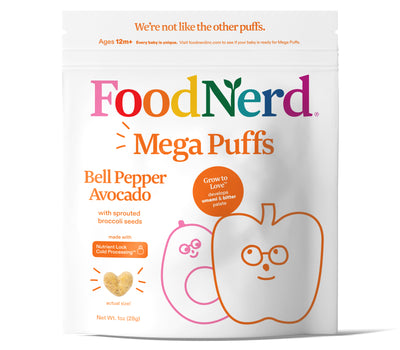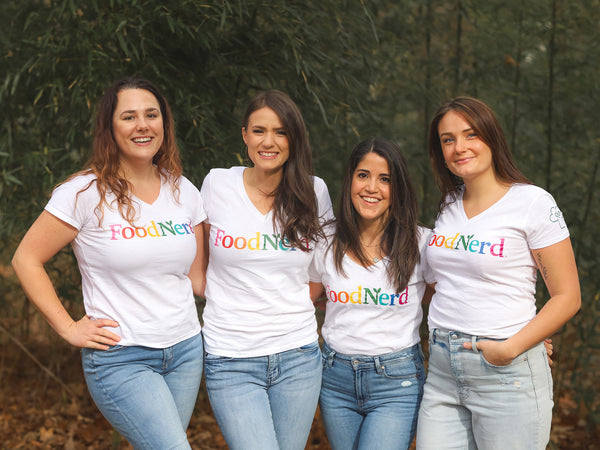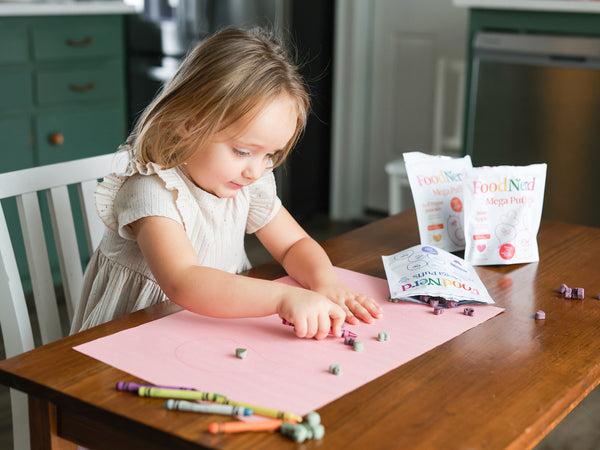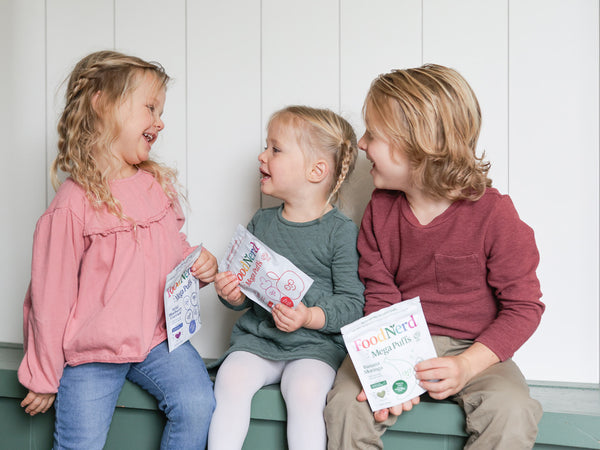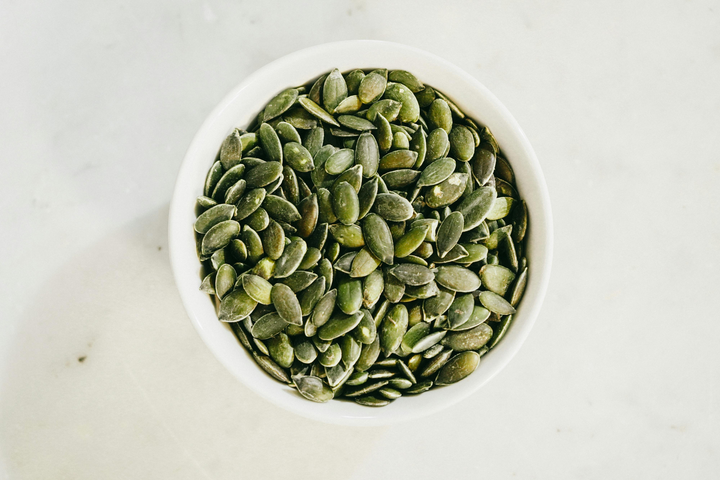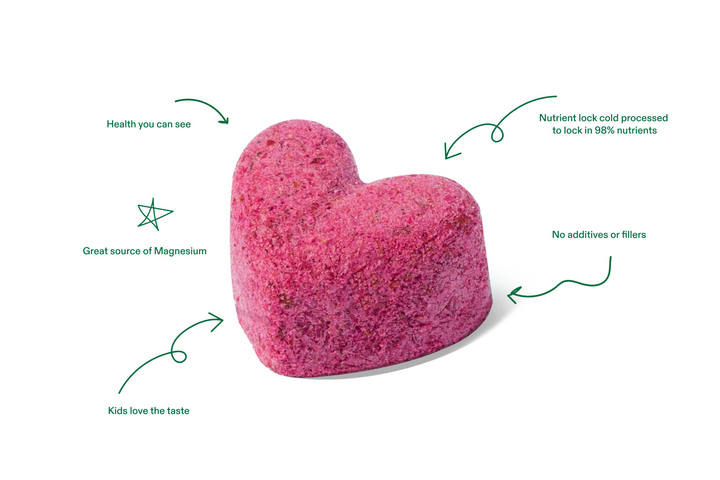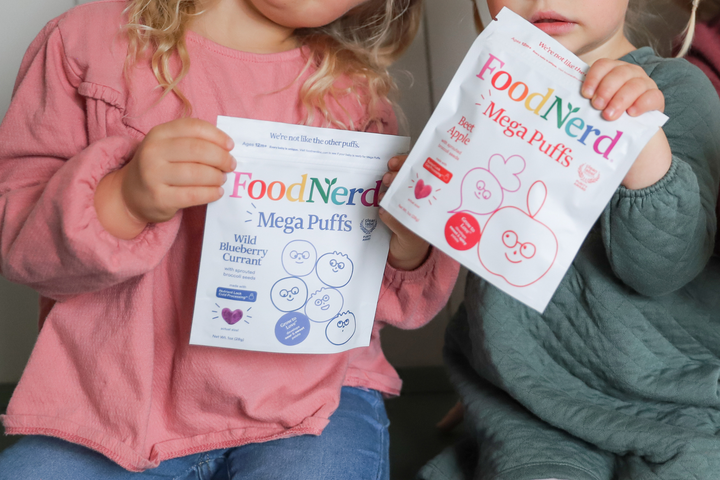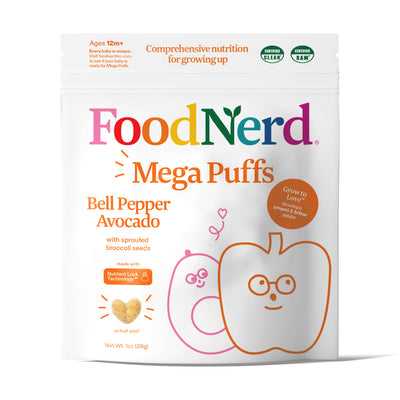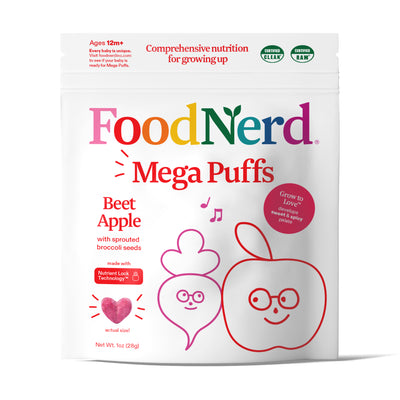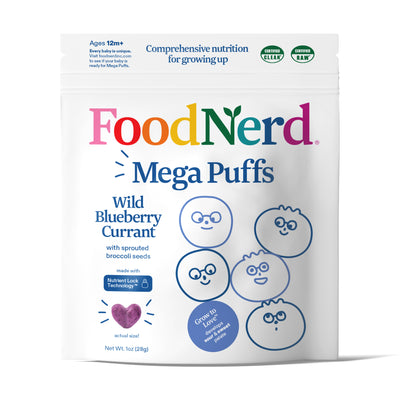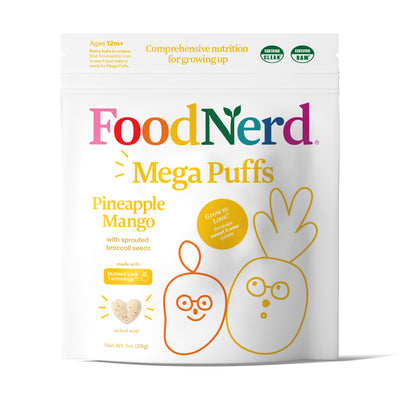Iron-rich foods are a crucial part of baby-led weaning. Around 6 months of age, your baby’s natural iron stores begin to drop, which makes it even more important to offer iron-rich foods as they explore solids.
While it’s true that many iron-rich foods come from meat, you absolutely can meet your baby’s iron needs with a plant-based approach. Foods like beans, lentils, tofu, leafy greens, and even some fruits can provide the iron your baby needs during this important stage.
In this post, we’ll walk through how much iron your baby needs and simple, plant-based ways to make sure they’re getting enough.
Iron Basics for Plant-Based Babies
Iron plays a key role in your baby’s growth and development. It helps carry oxygen throughout the body, supports healthy brain development, and keeps the immune system strong. (1).
Babies are born with a small supply of iron, but those stores begin to run low around 6 months of age. This means breast milk no longer fully meets baby’s nutritional needs and iron-rich foods are necessary once solids are introduced.
Baby’s Iron Needs
Because of iron’s role in growth and development, babies need more iron in the first year of life than they do for most of their childhood!
- 6-12 months: 11mg iron
- 1-3 years: 7mg iron
- 4-8 years: 10mg iron
There are two types of iron found in food: heme iron, which comes from animal-based sources and is more easily absorbed, and non-heme iron, which comes from plant-based foods.
While plant-based (non-heme) iron isn’t absorbed quite as efficiently, babies can still meet their needs with the right foods and some simple strategies.
Iron-Rich Foods for Baby-Led Weaning
Plant-based foods can be an incredible source of iron for babies starting solids. To serve each food safely, assess your baby’s developmental readiness for new sizes and textures.
1. Lentils (3.3 mg iron per ½ cup cooked)
Lentils are one of the top sources of iron and incredibly easy to serve to your baby safely! Plis, it’s a budget-friendly food that can be prepared in bulk.
- 6 months: Mashed, blended, or mixed with scoopable textures
- 9–12 months: Offer soft lentil patties or mixed with scoopable textures
2. Black Beans / Chickpeas / Kidney Beans (2–2.5 mg iron per ½ cup cooked)
Beans are loaded with iron and can be served in a variety of ways - mashed, pureed, and mixed with other foods. They’re also a great source of protein and fiber for growing babies.
- 6 months: pureed or mashed
- 9–12 months: flattened
3. Iron-Fortified Baby Cereal (up to 5–10 mg per serving, varies by brand)
Fortified cereals are a simple and convenient way to help meet your baby’s iron needs. Rice cereal naturally contains a compound called arsenic (generally safe in small amounts), so try offering a variety of iron-rich foods instead of relying on rice cereal alone.
- 6-12 months: Preload spoons or spread on soft toast strips.
4. Tofu (3 mg iron per ½ cup)
Firm tofu is a great way for babies to practice their grip in large strips, while soft tofu can be easily blended into purees. It’s also a good way to introduce soy allergen to babies early and often.
- 6 months: long, thick strips or blended into purees
- 9–12 months: bite-sized cubes (extra-firm)
5. Quinoa (1.4 mg iron per ½ cup cooked)
This is a great carbohydrate alternative if you want to switch things up from rice, and is packed with iron, protein, and fiber.
- 6-12 months: soft porridge or mixed with scoopable textures
6. Chia Seeds (2 mg iron per 2 tablespoons)
Chia seeds are extremely nutrient dense with iron and healthy fats in every bite. In the toddler years, these are a great “sprinkle” addition to any meal.
-
6-12 months: pre-soaked chia seeds mixed into soft textures (pudding, yogurt, oatmeal)
7. Pumpkin Seeds (ground) (2.5 mg iron per tablespoon)
Pumpkin seeds are also rich in iron, fiber, and protein for growing babies. Plus, they’re a great source of plant-based omega-3 fatty acids.
- 6-12 months: finely ground or thinned pumpkin seed butter
8. Cooked Spinach / Kale (3–6 mg iron per ½ cup cooked)
Leafy greens are a great plant-based iron option that also helps teach your baby about different flavors. Getting these somewhat bitter flavors introduced earlier in life can help prevent veggie refusal in their toddler years.
- 6-12 months: Finely chopped and cooked
9. Dried Prunes / Apricots (0.9 mg iron per ¼ cup)
Prunes and apricots are one of the only fruit sources of iron! They also act as a great source of fiber for babies that become constipated after starting solids. To serve safely, make sure all dried fruit is rehydrated.
-
6-12 months: rehydrated and finely chopped, mashed, or pureed
10. Sunflower Seeds (1–2 mg iron per tablespoon)
These are a great allergy-free option of iron that;s still versatile and exposes them to new flavors.
- 6-12 months: finely ground or thinned-out sunflower seed butter
Tips to Help Your Baby Absorb More Iron
It’s not just what your baby eats, but how you serve it that helps them absorb iron most effectively. These simple tips can boost iron absorption and make a big difference, especially with a plant-based diet.
Pair Iron with Vitamin C
Vitamin C can increase iron absorption by 30% (2)! When you serve iron-rich foods, try adding something with vitamin C like tomatoes, berries, citrus, or bell peppers.
Cook in Cast Iron
The iron from a cast iron pan transfers small levels of iron into your baby’s food! Over time, this can add a substantial source of iron to the foods they eat.
Offer Iron-Rich Foods More Than Once a Day
Babies have small tummies and high iron needs, so try to include iron-rich foods at least twice a day. Consistency matters more than big portions!
The Bottom Line
Babies need 11 mg of iron daily starting at 6 months, when their iron stores begin to drop. Plant-based babies can meet their needs by eating iron-rich foods like lentils, beans, tofu, fortified cereals, seeds, and leafy greens 2-3 times a day,
Sources:
- “Iron.” Centers for Disease Control and Prevention, Centers for Disease Control and Prevention, www.cdc.gov/infant-toddler-nutrition/vitamins-minerals/iron.html#:~:text=meet%20nutritional%20needs.-,Formula,to%20foods%20that%20contain%20iron. Accessed 9 May 2025.
- Von Siebenthal, Hanna K., et al. “Effect of dietary factors and time of day on iron absorption from oral iron supplements in Iron Deficient women.” American Journal of Hematology, vol. 98, no. 9, 26 June 2023, pp. 1356–1363, https://doi.org/10.1002/ajh.26987 .
